Associate Professor Neils Jonassen authored a bi-monthly static column that appeared in Compliance Engineering Magazine. The series explored charging, ionization, explosions, and other ESD related topics. The ESD Association, working with In Compliance Magazine is re-publishing this series as the articles offer timeless insight into the field of electrostatics.
Professor Jonassen was a member of the ESD Association from 1983-2006. He received the ESD Association Outstanding Contribution Award in 1989 and authored technical papers, books and technical reports. He is remembered for his contributions to the understanding of Electrostatic control, and in his memory we reprise “Mr. Static”.
~ The ESD Association
Reprinted with permission from: Compliance Engineering Magazine, Mr. Static Column Copyright © UBM Cannon
Electrical breakdown is not always associated with high voltage.
It is often assumed that an electrical breakdown, be it in a gas, liquid, or solid dielectric, is caused by a high voltage. It is possible to have a very high voltage without having a breakdown, and to create a breakdown at rather modest voltage levels; furthermore, the most common discharges (i.e., those involving insulators) cannot be associated with a voltage at all. A breakdown is the result of a substantial increase in the concentration of mobile charge carriers in the medium considered. This increase is usually caused by the effect of an electric field on the already existing carriers. In atmospheric air, these charge carriers are atmospheric ions and a few free electrons from natural radioactive decay.
Air ions are molecular clusters consisting mostly of water molecules around a singly charged oxygen or nitrogen molecule. In positive air ions, the charged molecule may be either oxygen or nitrogen, and there may be 12–15 attached water molecules. In negative air ions, the charged molecule is oxygen, and there may be 8–12 attached water molecules.1
Both ions and free electrons participate in the random thermal movement of the molecules. It should be stressed that the thermal energy of both ions and electrons is far too low for a thermal collision to result in an electron being knocked off an air molecule (i.e., ionization). However, if an electric field exists in the gas, the charged particles would be accelerated in the field and gain extra kinetic energy. If a particle with charge q is moved a distance Δx by a field with the strength E, the particle gains an increase in its kinetic energy equal to
ΔWkin = q • E • Δx, (1)
provided that the particle does not collide with other particles over the distance Δx.
Because an electron and a negative air ion both carry an elementary charge e, they will gain the same increase in energy if they travel the same distance. However, because of the difference in size, the electron is able to travel much farther between collisions with other particles than is the ion. The mean distance traveled between collisions is called the mean free path.
Breakdown Field Strength and Breakdown Voltage
Figure 1 shows an electron with the mean free path λe and a negative ion with the mean free path λi in a homogeneous electric field E.

Figure 1: Mean free paths (not to scale) of an electron and a negative air ion.
The maximum energy ΔWmax,e that can be reached by an electron is thus
ΔWmax,e = e • E • λe. (2)
The corresponding energy for an ion is
ΔWmax,i = e • E • μi. (3)
It takes an energy Wion to ionize an air molecule (i.e., to knock off an electron, eventually creating a pair of positive and negative air ions). Because the mean free paths (in atmospheric air and at atmospheric pressure) of an electron and an ion are λe ≈ 10–5 m and λi ≈10–7 m, respectively, an electron is able to reach this energy at a field strength (the breakdown field strength Eb) that is approximately 100 times lower than would be the case for an ion. Eb is thus given by
Wion = e • Eb • λe. (4)
Because Wion ≈ 5 • 10–18 J (or ≈ 30 eV) for atmospheric air, we find from Equation 4
 (5)
(5)
Conductors
The result of Equation 5 is valid only for a homogeneous field, such as may be established between two parallel electrodes (see Figure 2).
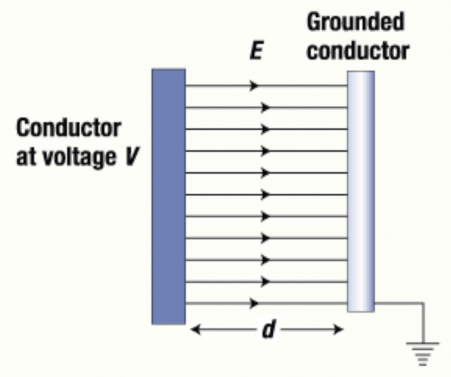
Figure 2: Homogeneous field between plane electrodes.
The field strength E in the space between the electrodes is
![]() (6)
(6)
where V is the voltage difference and d the distance between the electrodes.
The breakdown voltage is defined by
Vb = Eb • d, (7)
the voltage difference it takes to establish the breakdown field strength between the electrodes and cause a discharge, in this case, a spark. Assuming that d = 3 cm = 3 • 10–2 m, then the breakdown voltage is
Vb = Eb • d = 3 • 106 • 3 • 10–2 = 90,000 V.
If the field is not homogeneous, the conditions become more complicated. Figure 3 shows a situation similar to the one in Figure 2, except that one electrode is a small sphere, instead of a plane.

Figure 3: Inhomogeneous field from nonplanar electrode.
The different geometry results in higher breakdown field strength and lower breakdown voltage. The figure shows that the field strength has its maximum at the front of the small electrode; consequently, this is where a discharge may start.
Let us assume that a field strength of 3 • 106 V • m–1 has been established at the tip of the electrode. This field strength would start a discharge in a homogeneous field (see Figure 2) because an electron would gain the critical energy Wion over its mean free path (see Equation 4).
However, the field in Figure 3 decreases rapidly as you move away from the electrode, even over the short distance of the mean free path, and an electron cannot gain enough energy to ionize.
Therefore, we get a breakdown field strength Eb,sphere > 3 • 106 V • m–1. The actual value of Eb depends on the radius of curvature and shape of the electrode, but not in a simple way.
Although the breakdown field strength is higher in an inhomogeneous field, the actual maximum field strength caused by a given voltage is also higher.
If the linear dimensions of the grounded conductor in Figure 3 are much greater than the distance d and the radius r of the sphere, then the maximum field strength at the front of the sphere, Emax, can be approximated by
 (8)
(8)
If we let Emax be the breakdown field strength Eb, the breakdown voltage can be written as
![]() (9)
(9)
Equation 9 suggests that the breakdown voltage for a spherical electrode approaches a maximum value of
Vb,max = r • Eb (10)
for increasing distances d, and that 95% of this value is reached at a distance d = 10 • r.
Figure 4 shows the breakdown voltage Vb for parallel electrodes (calculated from Equation 7) and for a 1-mm sphere (calculated from Equation 9). In the case of the sphere, the voltage is normalized relative to the maximum value of r • Eb.
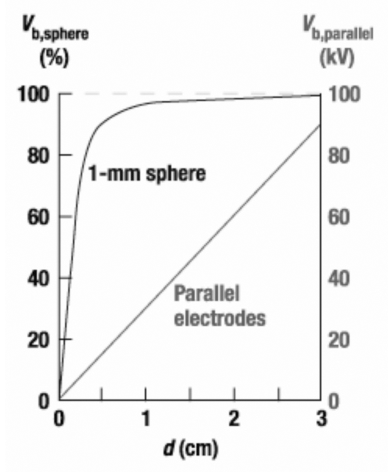
Figure 4: Breakdown voltage Vb for spherical and parallel-plane electrodes.
In developing Equation 8, the influence on the field of the connections to a voltage supply has not been included. This necessary simplification can also be deduced from Equation 10, which many readers will recognize as the relationship between the potential and the surface field strength of a conductive sphere located far away from other conductors.
The question of absolute values for the breakdown field strength as a function of electrode dimensions has received little attention in recent years. The latest reference I have been able to find is in Handbuch der Physik, which gives
 (11)
(11)
as the breakdown field strength for a sphere with radius r measured in meters.2 As r approaches infinity, Eb approaches 3 • 106 V • m–1, the breakdown field strength for plane electrodes. There is a corresponding formula for wires with radius r, in which the numerator 18 is replaced by 9.
Figure 5 shows the breakdown field strength Eb calculated from Equation 11, and the corresponding breakdown voltage Vb calculated from Equation 10.
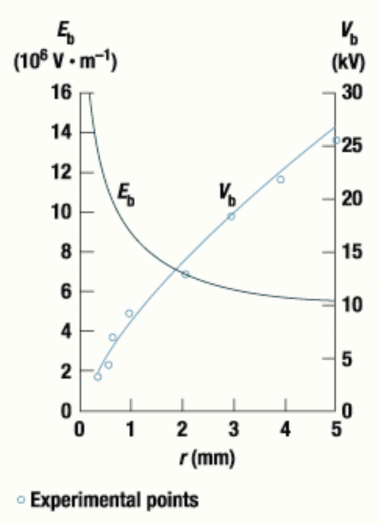
Figure 5: Breakdown field strength and voltage for spherical electrodes.
To investigate the validity of Equations 10 and 11, the following experiment was performed. A pointed electrode with a well-defined radius of curvature was placed above a metallic plane connected to ground through a suitable current meter, at a distance of 10–20 times the electrode›s radius. The voltage of the electrode was raised until a corona current to the plane could be measured. The voltage at which this happens is the breakdown voltage for the radius in question. This measurement was performed with electrodes with radii from 0.25 to 5 mm, and the results are shown in Figure 5 as the experimental points.
For a 0.5-mm electrode, the breakdown voltage appears to be about 5.5 kV at a distance of 1 cm, as compared with the 30-kV breakdown voltage for plane electrodes at the same distance. The much lower breakdown voltage at a spherical electrode, as compared with the parallel electrodes, is not the only difference between the two situations.
When a discharge happens between parallel electrodes, the breakdown field strength is, in principle, exceeded at all points. The discharge may therefore start anywhere the odd electron happens to appear, and the ionization takes place along a path connecting the two electrodes. This is what constitutes a spark.
In the case of a spherical (or otherwise pointed) electrode, the breakdown field strength is exceeded only in a small volume in front of the electrode, and ions are formed only in this region. If the electrode is positive, the positive ions outside the ionization region will move away from the positive electrode without multiplying, and the negative ions will move toward the electrode, where they will be neutralized. This process constitutes a corona discharge.
According to Equation 7, we would expect to get a spark discharge between plane electrodes at a distance d, as long as the voltage difference V fulfills the condition V ≥ Eb • d, where d is the distance between the electrodes, and Eb is the breakdown field strength for plane electrodes. In atmospheric air at 1 atm, Eb = 3 • 106 V • m–1. Therefore, at a distance of 0.1 mm = 10–4 m, breakdown should happen at V = 3 • 106 • 10–4 = 300 V. However, this is not so (see Figure 6).

Figure 6: Paschen’s curve.
Figure 6, known as Paschen’s curve, shows the breakdown voltage for plane electrodes in atmospheric air as a function of the product of the atmospheric pressure and the electrode distance. The product is given in units of mmHg • cm. Given a pressure of 1 atm (760 mmHg) and an electrode distance of 0.1 cm, we find at an abscissa of 76 mmHg • cm a breakdown voltage of 3000 V, corresponding to the breakdown field strength of 3 • 106 V • m–1 for plane electrodes.
The curve also shows that there is a minimum breakdown voltage of about 330–340 V, corresponding at 1 atm to a distance of 5–6 µm and a field strength of approximately 6 • 107 V • m–1. It means that it is not possible to get a discharge between parallel electrodes at a voltage less than approximately 300 V.
What happens if the electrodes are not planar? Is it possible to get a corona discharge at, say, 300 V?
Combining Equations 10 and 11 to solve for r, we find that a breakdown voltage of 300 V would correspond approximately to an electrode radius of 3 µm. However, the relationship in Equation 10 is, at best, semiempirical and was definitely never tested at such small dimensions. It is therefore still unknown whether a version of Paschen’s law would apply to nonparallel electrodes.
Insulators
In most, at least unwanted, discharges, insulative materials are involved. And certainly, breakdown may happen in fields from charged insulators. However, most of the rules and concepts outlined previously for conductors are not applicable to insulators.
Although discharges in the field between oppositely charged insulators are possible, there is no simple way in which such events may be predicted. The most common discharge in which insulators are involved happens in the field between a charged insulator and a grounded conductor.
Figure 7 shows a uniformly charged free insulative disc.
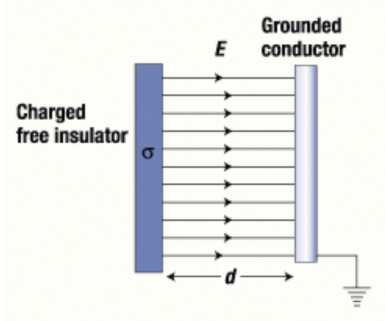
Figure 7: Homogeneous field from charged insulator.
A grounded conductor is placed parallel to the insulator at a distance d. If the charge density on the disc is s, the field strength is
 (12)
(12)
where eo is the permittivity of air (8.85 • 10–12 F • m–1).
Assuming that s = 2 • 10–5 C • m–2, then the field strength would be approximately 2.3 • 106 V • m–1, that is, not very far from the breakdown field strength for a homogeneous field. Therefore, there is a risk of a discharge of some kind—not a spark, but probably a brush discharge, which will quench itself while the charge on the insulator is being (partly) neutralized.
The possibility or risk of getting a discharge can be evaluated by measuring the field strength at the site of the grounded conductor. At this point, some readers might say, “Why not just measure the surface potential of the insulator?” Well, let us analyze the situation. If the distance d = 1 cm = 10–2 m, then the surface potential of the insulator is Vs = 10–2 • 2.3 • 106 = 23,000 V.
If this sounds like a dangerously high voltage, just decrease the distance to 1 mm, and the voltage goes down to 2300 V. The risk for a discharge has not changed, because the field strength is still the same.
The surface potential provides information about the risk of discharge only if it is used to calculate the field strength. For that same reason, the lower value of 300 V of Paschen’s curve cannot be applied to insulators.
Figure 8 shows a common situation in which discharges are caused by a charged insulator. A grounded conductor, in this case a small sphere, is brought into the proximity of a charged insulator that may or may not be uniformly charged. In all cases, the field will be strongly inhomogeneous. The situation looks at first sight very similar to the one in Figure 3, showing a sphere at a positive voltage near a grounded plane conductor. However, the conditions are very different between the two cases.
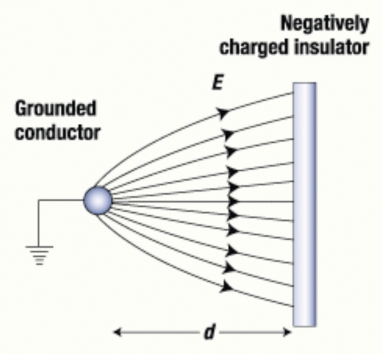
Figure 8: Inhomogeneous field from a charged insulator.
In the case of Figure 3, with two conductors facing each other, the distribution of the field is given when the geometry is given, and it may be possible to define a breakdown field strength and a breakdown voltage that can be compared with the voltage of the electrode.
In the situation in Figure 8, it may be possible to calculate the breakdown field strength (using Equation 11, in case of a sphere) at the face of the electrode and compare it with the field measured at the site of the grounded electrode. The magnitude of this field, however, can be achieved by an infinity of charge distributions on the insulator, and it cannot be related to or deduced from any surface potential measured in front of the insulator.
Conclusion
Electrical breakdown in air is caused by electrons being accelerated in a sufficiently strong field. For electrodes with given dimensions, it is possible to define the critical field strength, the so-called breakdown field strength, and, in the case of two conductors, a corresponding breakdown voltage.
In the case of discharges caused by charged insulators to a grounded conductor, the condition for a discharge is determined by the field strength at the face of the conductor, and the same breakdown field strength applies here as in the case of two conductors. The risk of a discharge from an insulator cannot be evaluated by the measurement of a surface potential. ![]()
References
- Niels Jonassen, “Ions” in Mr. Static, Compliance Engineering 16, no. 3 (1999): 24–28.
- Handbuch der Physik 14 (Berlin: Springer Verlag, 1927): 154.
 |
Niels Jonassen, MSc, DSc worked for 40 years at the Technical University of Denmark, where he conducted classes in electromagnetism, static and atmospheric electricity, airborne radioactivity, and indoor climate. After retiring, he divided his time among the laboratory, his home, and Thailand, writing on static electricity topics and pursuing cooking classes. Mr. Jonassen passed away in 2006. |
